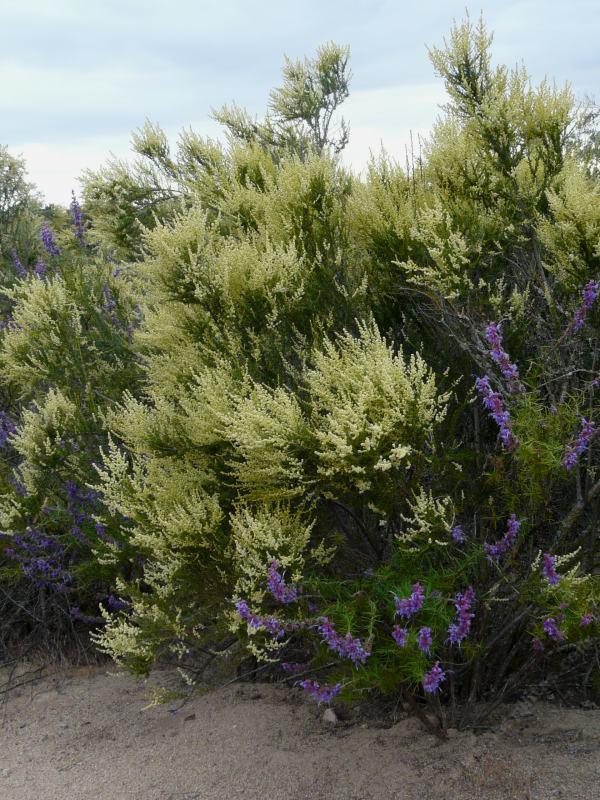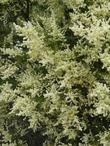Adenostoma fasciculatum
Chamise.
Chamise tends to be a medium to large shrub, 3-10 ft., tall. Native to the coast ranges (Mendocino and Lake County south to Baja) and Sierra Nevada mountains (From about Tehama County, south). a very tough plant. Used as a screen or as wind break, full sun, good drainage, erosion control, fire sensitive, can be made fairly fire resistant with a once/two week indirect watering. The Koso people used it for arrow points. The Luiseno people used it for the arrow foreshaft. Chamise Flowers sell well in the wholesale florist market. A trailing form of this plant is supposed to exist. So far, they do not trail when introduced to our heat. The trailing form doesn't have much vigor and will become upright if you let it. There are low forms in the wild growing in sand next to the coast and/or pruned regularly by Bambi, and the constant sea breezes. The full -sized form grows on both nursery sites and in our county in sand, clay, and gravel. In our area it is native to a rainfall range from 7-40 inches. Its name originates from the fascicled (clustered) leaves. Super, excellent erosion control plant. This plant is a major component of the chaparral and is holding the soil on the hillsides in California. Chamise also protects the soil after fires as it crown sprouts back from the base. A good understory plant that grows well under chamise, with a nice mulch of chamise leaves and twigs, is Viola pedunculata. Adenostema is the wrong spelling , Adenostoma is the right spelling. (Greek for the gland at the mouth of the calyx.)
Adenostoma fasciculatum tolerates sand and clay.
Adenostoma fasciculatum is great for a bird garden.
Foliage of Adenostoma fasciculatum has color lt-green and is evergreen.
Flower of Adenostoma fasciculatum has color white.
Communities for Adenostoma fasciculatum:Chaparral and Coastal Sage Scrub.
| ph: | 5.00 to 8.00 |
|---|---|
| usda: | 6 to 10 |
| height[m]: | 1.00 to 3.00 |
| width[m]: | 1.00 to 2.00 |
| rainfall[cm]: | 31.00 to 77.00 |






 play movie
play movie


